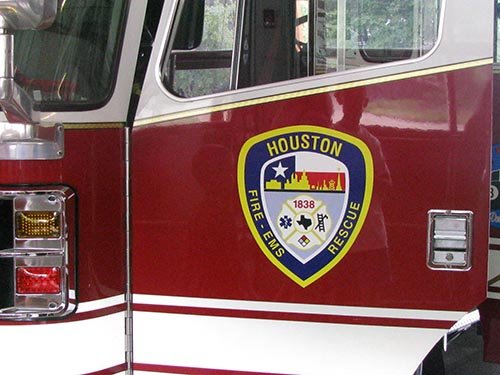Houston Fire Department Initiative Focuses on Firefighter Health and Safety
Style Magazine Newswire | 8/7/2018, 2:21 p.m.
HOUSTON - The Houston Fire Department has been awarded the 2017 Assistance to Firefighters Grant (AFG). It’s an award that will give the department the ability to protect firefighters and maintain a safe and healthy work environment. Due to the extremely busy emergency response system in Houston firefighters are exposed to vehicle fumes on a routine basis. When these vehicles are started, the exhaust infiltrates the living and sleeping areas of the fire stations that are staffed around the clock. HFD proposes to improve the health and safety of its firefighters by reducing exposure to vehicle exhaust; a known carcinogen at 15 of the busiest fire stations in the city through the installation of vehicle exhaust removal systems. These 15 stations are responsible for deployment to a quarter of HFD’s emergencies.
According to a recent OSHA study, repeated short-term exposure to high concentrations of diesel emissions can cause headaches, dizziness, and irritation of the eyes, nose and throat. Prolonged exposures have been linked to an increased risk of cardiovascular, respiratory diseases, and lung cancer.
Approximately 600 of HFD’s firefighters are assigned to the 15 stations selected for installation of the vehicle exhaust removal systems. In addition to being some of the busiest in the city, many stations selected are among the busiest in the county. These systems will provide a healthier and safer work environment for Houston’s busiest first responders. The system captures and extracts all exhaust fumes when engines are running in the apparatus bay. It is simple to use, efficient, and a recommended cost-effective method for controlling exhaust emissions for Firehouse and EMS applications. In addition to inhalation exposures, the capturing of vehicle emissions will also limit exposure via ingestion while firefighters eat their meals at fire stations. Numerous studies support the standard set forth by the National Fire Protection Administration 1500 and recognize the necessity of removing particulate matter from apparatus bays to prevent infiltration into living quarters used by firefighters.
CANCER IN THE FIRE SERVICE
One of the greatest risks to firefighters often presents itself away from the fire ground. Connections between firefighting and certain types of cancers has been evidenced by a number of studies. Exhaust fumes and other residues on protective gear are carcinogens and dangerous. A firefighter can experience a lifetime of environmental exposure in a compressed period of time. It may be from exposure to one fire or in many cases from chronic exposure throughout the career of the firefighter.
AWARD BREAKDOWN
*Grant Funds: $703,914
*Mayor Sylvester Turner has approved matching funds of: $70,391
*Total Project: $774,305
*HFD is in the process of applying for next year's grant to add vehicle exhaust systems to more Houston fire stations.
SELF-CONTAINED BREATHING APPARATUS OR (SCBA) DEPLOYMENT
Another project representing millions of dollars in investment towards the health and safety of HFD personnel is the recent deployment of brand new Self-Contained Breathing Apparatus or (SCBA).
Firefighters recently received 526 SCBAs and 3,046 face pieces purchased through the FEMA Assistance to Firefighters Grant (AFG); $2,956,414 grant funds with a HFD match of $443,462.
The new SCBA ensembles and individual face pieces will provide Houston firefighters with a host of built-in increased safety measures that will significantly improve their current protection levels while working in IDLH environments and will give them more ample warning to allow for a safe exit from the IDLH environment.
The new equipment increases voice intelligibility requirements so that firefighters are able to communicate more effectively and heads up display (HUD) indicators alerting the wearer of the available air supply. This change will make a dramatic improvement to the respiratory safety to Houston Firefighters providing members with an additional 2 minutes and 10 seconds of airway protection that could be the difference between life and death on the fire ground.
PROTECTIVE HOODS
The protective hood covers those exposed areas of the neck, which are not protected by the coat collar, SCBA face piece or helmet. As such, the hood is considered an interface item where burns can readily occur if not properly protected. The hood completes the firefighter encapsulation process, protecting them when they enter dangerous environments. The Hoods were purchased through a donation from Shell Oil Company; $140,000 and a 20,000 donation from Firehouse Subs.
MORE ON THE ASSISTANCE TO FIREFIGHTERS GRANT
The primary goal of the Assistance to Firefighters Grant (AFG) is to meet the firefighting and emergency response needs of fire departments and nonaffiliated emergency medical service organizations. Since 2001, AFG has helped firefighters and other first responders obtain critically needed equipment, protective gear, emergency vehicles, training and other resources necessary for protecting the public and emergency personnel from fire and related hazards.




